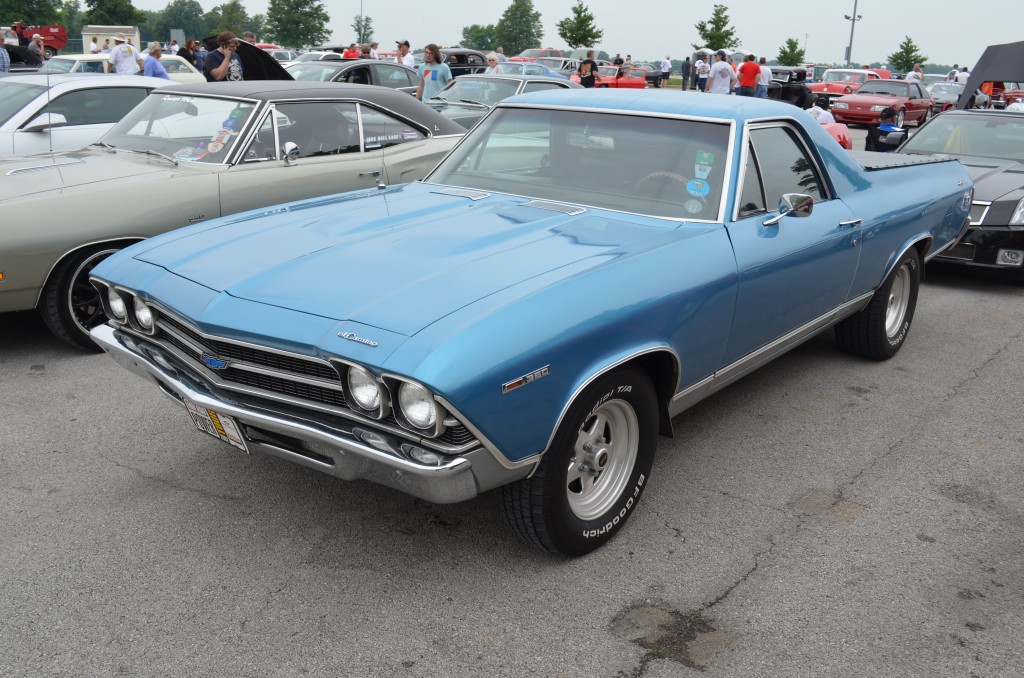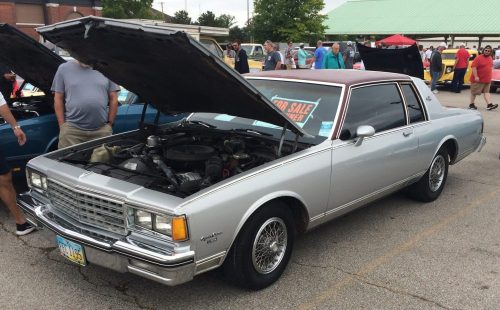I’m asking this for a friend and I know you will have suggestions. He’s building a vintage El Camino and has decided on an LS swap. He wants 650-700 hp with an automatic. The LS9 is 635hp to start but no auto is recommended. As a crate engine, the LS9 would cost about $21,000 plus the transmission and harness. The next idea is an LS7 for about $13,000 plus trans and harness. What would be your suggestion for a cost-effective way to get to 650-700 hp? What about an LS3 for about $12,000, plus trans and harness and throw on a Magnuson supercharger for about $6,000? Would that be a more cost-effective way to go? – R.L.

Jeff Smith: Let’s first look at why he thinks he needs 700 hp in an El Camino.
It will be near impossible to plant this kind of power with street tires and especially in an El Camino since there is minimal weight over the rear tires.
Even at 500 hp, this would be difficult—at 700 hp, he will likely need slicks just to keep the tires from spinning at any speed below 60 mph.
This will make the car extremely difficult to drive.
If it has $10,000 worth of suspension, perhaps traction will be slightly better.
But with a near-stock suspension it will be a dangerous handful unless he’s a very skilled driver. Emphasis here on driver skill.
Much of this horsepower push is coming from the magazines. They rarely talk about 500 hp engines anymore. The problem with 650- to 700-hp engines is there are parallel issues which are never discussed, yet are critical to creating reliable performance.
You mentioned transmissions. Let’s limit our discussion to automatics since they are easier to drive. At 750 hp, we are at the top of the heap for a 4L75E from GM, and it’s probably better to go with a 4L80E. This is a big transmission, but in a 1968-72, it probably won’t require floor pan mods.
A strong 4L80E will cost between $3,500 and $4,000 and will then demand a custom driveshaft and something stronger than an 8.5-inch 10-bolt rear end.
We’re looking at another $3,500 for all those pieces. And don’t forget that you will need some monster tires to hook all that power.
The best way to get to that power level is probably with a supercharger—either a centrifugal like a Vortech, or a positive displacement blower like the Magunson you mentioned. These add-on kits will also drive up the price of the entire package. If we include the previously discussed drivetrain parts—we’re looking at numbers approaching $20,000.
Don’t Sleep on the Supercharged LSA
One supercharged Chevrolet Performance package I like is the one that garners very little attention. The LSA (PN 19331507) is the engine used in the older supercharged Cadillac CTS-V before the conversion to the LT4. The LSA is a docile package, yet delivers excellent power at 550 hp and is essentially an LS3 with different heads, a small 1.9L TVS blower, and an ultra-conservative cam.
This engine never makes less than 400 foot-pounds of torque from 2,000 to 6,300 rpm with a peak torque of 551 ft.-lbs.
That would feel like a mild big-block in the car and yet is only 6.2L or 376 c.i.d. Remember, these are conservative horsepower ratings—at least 5 percent under the normal hot-rod-style correction factor.
Adding 5 percent means closer to 575 hp.
Add headers and a mild tune (the engines are always soft on timing and rich in the air-fuel calibration) and the power could jump to 625 hp. This is a far better choice in terms of power per dollar.
The engine is still expensive at slightly less than $12,000 and it will need additional parts.
Among the required add-ons is a controller kit as well as a complete intercooler since it is plumbed to employ this advantage. That will mean an external reservoir, lines, and a separate radiator. All this keeps the inlet air temperature manageable so that the engine doesn’t detonate.
It’s a chore to find a spot for all the plumbing although a 1968-72 El Camino probably has the room. But much of that real estate will be eaten up pretty quickly when you start adding an ECU, intercooler, and all that plumbing. Plus, you will also need a complete accessory drive, which GM also can supply and is highly recommended
Consider a Junkyard Pull for the Most Cost-Effective Build
For a slightly different approach, I just finished a junkyard 6.0L truck engine for Car Craft Magazine with a small cam (it idles at 14 inches of vacuum), mildly ported 5.3L heads, and EFI using a stock Trailblazer SS intake.
That engine made 496 hp at roughly 6,000 rpm.
Duplicating this package probably wouldn’t cost more than $6,000 including the Holley HP ECU.
With better heads and slightly more camshaft, we think this engine will make 550 hp but the price begins to climb with better parts.
…
NOTE: LS car engines and LS-based Vortec truck engines are abundant in scrapyards everywhere, and a good low-cost option for LS swap projects. You can use these articles to help you locate the engine you want to work with.
- LS Engine Spotter’s Guide, Part 1: Matching the Vehicle to the Engine
- LS Engine Spotter’s Guide, Part 2: Matching the Engine to the Vehicle
…
If your friend wants a new engine with a warranty, he can’t go wrong with an LS3.
Put headers and a mild cam in it and that will make close to 550 hp and I’ll bet he will be thrilled—unless he is used to more power. If his previous ride had less than 450 hp—the added power will astonish him. It’s not a bad idea to go conservative at first and then build from there.

FWIW…as a 70 ElCamino owner I wish to take issue with your statement about El Camino’s having minimal weight over the rear tires, if you would check the specs, El Camino’s actually have a little more weight over the rear than the coupe. I believe it is between 20 and 40 lbs rear weight bias for the El Camino, not a whole lot, but I wish to lay to rest a common misconception. Thank you
Yes I have a 1983 El Camino, I’m getting to ready to restore it. My question, a problem is this. It was originally a diesel engine in it, they took it out they didn’t like that diesel engine. They put a 350 Chevy engine in it now. And it’s no good. My question is for the value of it and for car shows and things should I put a diesel engine back in? Or what do you suggest I stick with the 350 or 383 Chevy block engine? I want people to wild one I take it to the car shop and drive it downtown. So if you could give me some information, or your take on I should put a diesel back in, or poor white Chevy engine back in? Thank you Jeff
Hey Jeff, while Mr. Smith may have some thoughts on this too, I felt compelled to offer this insight.

…
I actually stumbled across an early 1980s Caprice Classic at the Goodguys Summit Racing Nationals last weekend that was equipped with the same 5.7L diesel that (I think) would’ve been in your Elky. While I couldn’t find the specific car’s owner, I did chat with someone standing nearby who claimed they’d owned a similar diesel-equipped Caprice. Suffice it it say, he was less than enthusiastic about the engine. Indeed the Oldsmobile-sourced diesel 350 was notorious for head gasket failures and other shortcomings. And it only made between 100 and 120ish hp. The gentleman I spoke to also shared some frustrations about parts availability.
…
If you’re an original purist and are comfortable working with diesels, then sourcing the original Olds diesel may give you some smiles and thumbs-ups at car shows from a uniqueness standpoint. But keeping some form of the small block Chevy (350, 383, or whatever) may be far easier, cheaper, and a lot more fun for your right foot.
…
Here’s a pic of that Caprice. It certainly was cool and unique!
Hay Jeff, on your statement of traction on El Camino, I agree with you, had 1970 383 850 carb turbo 350 Trans +10″ soft tires, TRACTION was a problem! Even my wife at the time, could barely take off
Without slipping the
Tires! Forget wet roads & oily intersections! These
We’re not slicks, Street Tires. Thanks